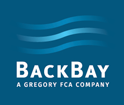The headline statistic from BackBay Communications’ first-ever study analyzing the adoption rate of content marketing is that, among the world’s largest asset managers, nearly nine out of every 10 produce thought leadership on a regular and recurring basis. This stat, however, may be a bit misleading, as the research only analyzed the content-creation efforts of the 200 largest global investment firms – organizations that in recent years have dedicated significant time and resources to building out these capabilities. Among many smaller partnerships, however, content marketing is far less ubiquitous and the frequency of production far more sporadic, which speaks to the challenges that most boutiques face in pushing these projects through to completion.

Even among the top 200 global asset managers, a notable difference was evident in the level of activity between the very largest organizations and just about everyone else. For instance, 96% of the firms in the top quartile based on AUM produce content regularly, and nearly 70% are creating thought leadership on a weekly basis or even more frequently. Among the bottom-quartile names, in contrast, roughly a quarter do not produce any content at all and only about 40% do so weekly.
Keep in mind that among the top 200 global firms, even those in the bottom quartile are each managing assets in excess of $50 billion. For fund managers or investment advisors managing half that amount or far less, it often becomes a question of where to find the time and who, exactly, will be tasked to drive these projects forward. Moreover, few boutique firms have the resources in place – ranging from copywriters and former journalists to designers or in-house video production capabilities – to quickly “turn on” a content initiative. It’s more often the case that those initiating these efforts from scratch are often unsure where to begin or even the overriding objective of thought leadership – factors that often thwart content strategies from the very outset.
As part of BackBay Communications’ white paper quantifying the reach and extent to which asset managers are deploying content marketing programs, we also outlined the best practices to highlight those who are most effective. The white paper, “Feeding the Beast,” can be found here.
The Three C’s to Implementation: Coordination, Champion, Cadence
As it relates to the obstacles that tend to stall content creation, Winston Churchill’s famous maxim that “perfection is the enemy of progress” often applies.
On Charlie Rose, five years ago, Warren Buffett and Carol Loomis described their typical process in drafting Berkshire Hathaway’s annual letters to investors. Carol, of course, is the famed Fortune reporter who has also served as Warren Buffett’s copy editor for the past 40 years. They noted that in his earliest pieces, Buffett tried to cram everything he knew into one article, adding that the first byline he ever drafted was nearly spiked because he wouldn’t take any editorial direction.
This speaks to some of the challenges that face all organizations new to content creation, which is that without guardrails and a defined destination, the process itself will feel aimless and overwhelming. More importantly, though, the final product will seem similarly muddled if it is ever completed in the first place.
When we work with clients, we’ll try to create a structure that first defines the goals of content within an integrated PR plan. The role of thought leadership, of course, is to always inform and enlighten, not to overtly promote, but to showcase the individual and the firm as experts in their fields. Through mapping out where content will fit within a more comprehensive communications plan, one that incorporates PR and advertising, we can identify the potential themes that will be most impactful and use other more promotional means to amplify the thought leadership. This speaks to the coordination required to both devise content strategies and then fully leverage the material as it is created.
To create a powerful and effective content piece, we will have a discussion with our clients up front to understand their objectives, key audiences, topics, authors and tone. We find it most effective to have a primary point of contact at our client who understands the objective and is deputized and motivated to push these pieces forward. This helps avoid the bane of too many participants involved in the process without a guiding and authoritative voice, which calls to mind the proverb “a camel is a horse designed by committee.”
Finally, as part of establishing a content strategy, we’ll try to set a cadence that is both realistic and manageable. For smaller organizations with less bandwidth, we may look to establish a quarterly production schedule, whereas for others it may be weekly or monthly. The key is to facilitate a consistent flow that both sets audience expectations and also creates deadlines that impart accountability.
While it has less to do with implementation, we’ll also refer to a fourth “C” in which success ultimately depends on how well firms can connect with their chosen audience. This is about using content to express a more nuanced narrative that traditionally requires face-to-face meetings and conveying an authenticity through storytelling that augments those conversations and, ultimately, serves as a form of currency in an industry that trades on intellectual capital.


